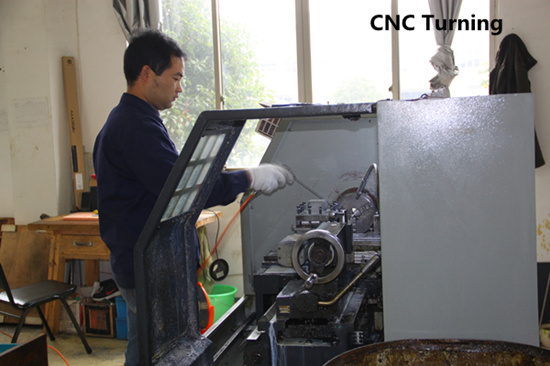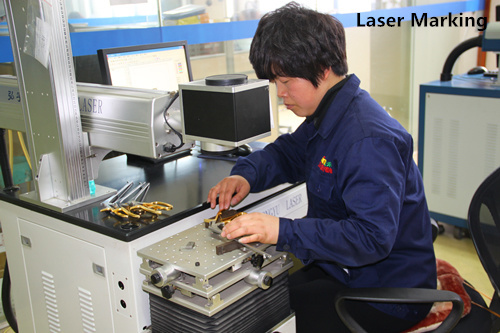| Sign In | Join Free | My himfr.com |
|
| Sign In | Join Free | My himfr.com |
|
| Ask Lasest Price | |
| Supply Ability : | 500 PCS/Month |
| Certification : | CE, FDA, ISO13485 |
| Model | Name | Specifications |
| HF3063 | Uterine biopsy forceps | / |
| HF3062 | Cervical dilator | / |
| HF3061 | Hyteromyoma separator | / |
| HF3060 | Hook | / |
| Package detail: | Poly bag and special shockproof paper box. |
| Delivery detail: | By air |






FAQ
The results of minimally invasive surgery in the treatment of ovarian cysts are generally significant and effective. According to multiple studies and clinical data, laparoscopic and colposcopic removal, the two main minimally invasive surgical methods, perform well in the treatment of ovarian cysts.
treatment effect:
Laparoscopic surgery: This method has the advantages of less
trauma, faster recovery, and fewer complications. Studies have
shown that the therapeutic effectiveness of laparoscopic resection
reaches 95.7%, which is significantly higher than the 84.6% of
traditional laparotomy.
. In addition, laparoscopic surgery can improve ovarian function
and stromal hemodynamics without seriously affecting ovarian volume
and number of follicles, and avoids premature ovarian failure that
may be caused by traditional laparotomy.
.
Colposcopy removal: This method has a short operation time,
significant therapeutic effect, and the operation time is
significantly shorter than traditional laparotomy (69.71 minutes
vs. 80.91 minutes), but there is no statistically significant
difference in surgical bleeding volume and hospitalization time
between the two groups.
.
Postoperative recovery:
Minimally invasive surgeries typically require shorter hospital
stays and faster post-operative recovery. For example, after
laparoscopic surgery, the time to first exhaust gas and the time to
leave the bed are significantly shortened, the amount of
intraoperative bleeding is reduced, and postoperative complications
are significantly reduced.
.
Perioperative nursing interventions further improved patients’
postoperative recovery and significantly reduced negative emotions
and postoperative pain levels
.
Complications and Safety:
Minimally invasive surgery has less trauma and fewer postoperative
complications, such as infection and bleeding.
. In addition, interventional ultrasound-guided treatment of
patients with ovarian chocolate cysts has shown good results and
low complication rates.
.
Preserve ovarian function:
Minimally invasive surgery is particularly suitable for patients
who need to preserve their fertility. Through laparoscopic or
transcolposcopy removal, normal ovarian tissue can be protected to
the greatest extent and damage to the ovary and nearby normal
tissues can be avoided.
.
In summary, minimally invasive surgery has shown high efficacy,
rapid postoperative recovery, and low risk of complications in the
treatment of ovarian cysts, and is a treatment method worthy of
promotion and application.
The long-term efficacy and recurrence rate of minimally invasive
surgery for the treatment of ovarian cysts can be analyzed from
multiple perspectives.
According to research in the "Journal of the National Society of Clinical Medical Engineering", the application of laparoscopic and transcolposcopy removal in patients with ovarian cysts showed that the patient's ovarian cyst lesions were all cleared after examination, with no recurrence and no clinical symptoms. It disappears, and menstruation is basically normal in 3 months, that is, it is effective; the cyst lesions are basically cleared after inspection, and there is no recurrence, and the clinical symptoms basically disappear, and menstruation is basically normal after half a year, that is, it is effective.
. This shows that minimally invasive surgery has a high efficacy in
treating ovarian cysts in the short term (such as 3-6 months), and
there is no obvious recurrence.
However, it can be learned from "The Development and Application of Laparoscopic Technology" that neglecting and missing the tiny cysts or residual cyst wall lesions that existed before surgery is one of the main reasons for postoperative recurrence.
. Therefore, in order to reduce the postoperative recurrence rate,
in addition to completely clearing the lesions, it is also
necessary to use GnRHa (gonadotropin-releasing hormone analogues)
postoperatively to control and reduce the recurrence rate.
. In addition, protecting ovarian function is also one of the
important measures to reduce recurrence, especially to avoid or
reduce the impact of electrical radiation on ovarian reserve
function during surgery.
.
Based on the above information, the long-term efficacy of minimally invasive surgery for the treatment of ovarian cysts is usually good, but it needs to be combined with postoperative management (such as the combined use of drugs such as GnRHa) to further reduce the recurrence rate.
The cost-effectiveness comparison of minimally invasive surgery
(eg, laparoscopic surgery) versus traditional open surgery for the
treatment of ovarian cysts can be analyzed from multiple
perspectives.
In terms of trauma and recovery time, laparotomy has a greater psychological and financial burden on patients due to its greater trauma and longer recovery time.
. In contrast, laparoscopic surgery has less trauma, shorter
hospitalization time, and less impact on the body's immune function
and stress response.
. This not only reduces patient hospitalization costs but also
speeds up post-operative recovery, thereby lowering overall
healthcare costs.
.
In terms of complication rate and nursing satisfaction, transvaginal laparoscopic treatment (NOTES) performs well in terms of safety, has a low risk of complications, and can reduce hospitalization costs.
. In addition, studies have shown that TV-LESS (transvaginal
single-port laparoscopic surgery) has the advantages of less
postoperative pain, faster recovery of defecation function, and
higher cosmetic scores than other surgical methods.
.
However, it should be noted that although laparoscopic surgery is
superior to open surgery in many aspects, its operation complexity
is higher and it is not suitable for all situations, such as severe
abdominal adhesions, tumors larger than 15cm in diameter, or
suspected malignant tumors.
. Therefore, when choosing a specific surgical method,
comprehensive consideration must be made based on the patient's
specific condition and needs.
Overall, minimally invasive surgery is significantly more cost-effective than traditional open surgery in treating ovarian cysts. It not only reduces the patient's hospitalization time and medical expenses, but also improves postoperative recovery speed and quality of life, while reducing the incidence of complications.
For different types of ovarian cysts (such as chocolate cysts,
ovarian dysfunction, etc.), there are certain differences in the
effects of minimally invasive surgery.
Chocolate cyst:
Interventional ultrasound-guided treatment: Interventional
ultrasound-guided treatment for patients with ovarian chocolate
cysts can not only achieve minimally invasive effects, but also
have fewer postoperative complications, which can promote the
patient’s speedy recovery and is worthy of promotion.
. In addition, this method has obvious advantages in terms of local
efficacy, minimal invasion, few complications, and can be repeated
many times. It is especially suitable for young patients with
recurrent disease and infertility.
.
Laparoscopic surgery: Laparoscopic ovarian chocolate cyst removal
is a common treatment method that relieves clinical symptoms
through complete removal of cyst tissue. However, this surgery may
affect the patient's ovarian reserve and increase their physical
and mental burden
. Studies have shown that the combined use of
gonadotropin-releasing hormone agonists and laparoscopic surgery
can significantly improve ovarian function, reduce the risk of
postoperative complications, and improve patients’ quality of life.
.
Abnormal ovarian function:
For patients with ovarian dysfunction, laparoscopic surgery is also
an effective minimally invasive treatment method. However, because
ovarian dysfunction itself may affect recovery and outcomes after
surgery, special attention is needed to postoperative care and
monitoring. For example, in one study it was found that serum
anti-Müllerian hormone (AMH) levels were significantly decreased
and follicle-stimulating hormone (FSH) levels were significantly
increased in patients after laparoscopic surgery, suggesting that
the surgery has a negative impact on the ovaries. The reserve
function has a certain impact
.
Although minimally invasive surgery has achieved good results in
treating both ovarian chocolate cysts and ovarian dysfunction, the
specific results will vary depending on the patient's specific
situation. Interventional ultrasound-guided treatment and
laparoscopic surgery are both effective options for chocolate
cysts, but individual patient differences and circumstances need to
be considered when choosing a specific option.
Recovery of fertility in patients after minimally invasive surgery
is usually ideal. According to multiple studies and clinical
practice, patients who undergo minimally invasive procedures, such
as laparoscopic conization and trachelectomy alone, do better in
terms of conception rates, live birth rates, and preterm birth
rates, as well as postoperative complications. less
.
Specifically, for cervical cancer patients, when choosing
fertility-preserving surgery, factors such as tumor size and lymph
node metastasis should be comprehensively considered, and combined
with the experience of the treatment team and the patient's
individualized treatment to achieve the best fertility results.
. In addition, in hysteroscopy combined with laparoscopic surgery,
high-quality nursing intervention can significantly improve
patients' nursing satisfaction and fertility recovery rate.
.
Hysteroscopic techniques have also shown good results when dealing
with conditions such as endometrial polyps. Research shows that 86%
of patients can repair their endometrium within 1 month after TCRP,
and the remaining patients can also complete repair within 2
months.
. Therefore, women who want to have children should be guided to
get pregnant as soon as possible to avoid the recurrence of polyps.
Complication rates with minimally invasive surgery for the
treatment of ovarian cysts vary based on different studies and
approaches. We can see the following data:
In a study on laparoscopic ovarian cyst removal, after
perioperative care, the complication rate was 4.0% (3 cases) in the
experimental group and 13.3% (10 cases) in the control group.
.
In another study, the postoperative complication rate using natural
orifice laparoscopy (NOTES) technology was 3.90%, which was
significantly lower than the 7.80% rate of conventional
laparoscopic surgery.
For more photos and details please contact me:
Company Name: Tonglu Wanhe Medical Instruments Co., Ltd.
Sales: Sue

|




